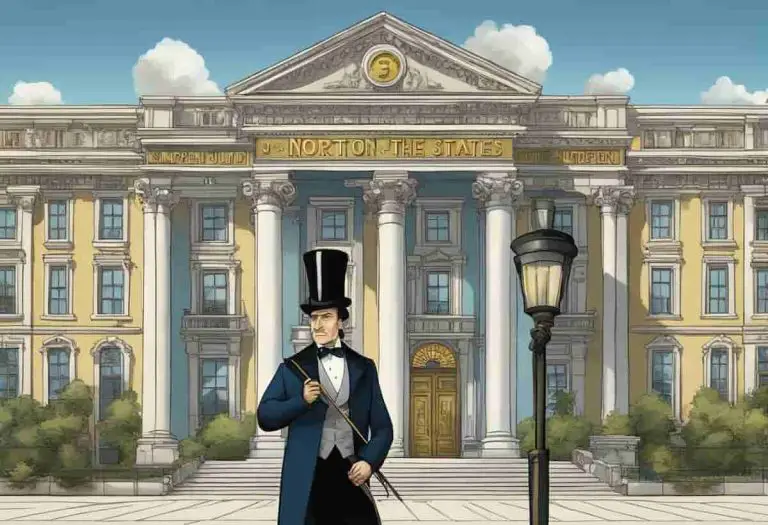Bluebeard’s Ghost: The Haunting Legacy of a Murderous Tale
Bluebeard’s Ghost is a well-known figure in folklore and popular culture. This character has fascinated people for centuries, and its story has been retold countless times in various forms of media. In this article, I will explore the origins of Bluebeard’s Ghost and different interpretations of the character.
The story of Bluebeard’s Ghost can be traced back to the French folktale of Bluebeard, which tells the story of a wealthy man who marries several women and murders them all. The ghost of Bluebeard is said to haunt the castle where he lived, and his presence is often associated with death and tragedy. Over time, the story of Bluebeard’s Ghost has evolved, and the character has taken on different meanings and interpretations.
Bluebeard’s Ghost has made appearances in various forms of media, including literature, film, and television. The character has been portrayed in different ways, from a malevolent spirit to a sympathetic figure seeking redemption. Bluebeard’s Ghost has also been used as a metaphor for different themes, such as the dangers of excessive wealth and the consequences of past actions.
Key Takeaways
- Bluebeard’s Ghost is a well-known figure in folklore and popular culture, with a story that has been retold countless times.
- The character has evolved over time and has been portrayed in different ways in various forms of media.
- Bluebeard’s Ghost has been used as a metaphor for different themes, such as the dangers of excessive wealth and the consequences of past actions.
Origins of Bluebeard’s Ghost

Historical Context
Bluebeard’s Ghost is a popular folktale that has been told and retold for centuries. The origins of the story can be traced back to France in the late 17th century. The tale was first published by Charles Perrault in 1697 in his collection of fairy tales, “Histoires ou contes du temps passé” (“Stories or Tales from Times Past”).
The story of Bluebeard’s Ghost is believed to be based on the real-life crimes of a French nobleman named Gilles de Rais, who was executed for the murder of numerous children in the 15th century. The story also draws on other European folktales, such as the story of the “Black Bull of Norroway.”
Appearance of Bluebeard’s Ghost

Physical Description
Bluebeard’s Ghost is a spectral figure, often described as a tall and imposing man with a long beard and piercing blue eyes. He is said to be dressed in a long, flowing cloak that billows behind him as he moves, and his presence is accompanied by a cold chill that can be felt by those nearby.
Symbolic Representation
In many interpretations of the Bluebeard legend, the ghost is seen as a representation of the sins and secrets of the titular character. He is a reminder of the violence and cruelty that Bluebeard inflicted upon his wives, and serves as a warning to those who would follow in his footsteps.
The ghost is often seen as a symbol of justice, punishing those who have committed heinous acts and ensuring that their crimes do not go unpunished. However, he can also be seen as a symbol of the dangers of obsession and the consequences that can arise from unchecked desires.
Bluebeard’s Ghost in Popular Culture

Psychological Analysis
I find Bluebeard’s Ghost to be a fascinating story from a psychological perspective. The character of Bluebeard himself is a complex one, exhibiting traits of both narcissism and psychopathy. His desire for control over his wives, as well as his tendency towards violent outbursts, are both indicative of a deeply disturbed psyche.
Furthermore, the idea of a haunted house and a ghostly apparition can be seen as a manifestation of the protagonist’s own psychological traumas. The ghost may represent a repressed memory or emotion that the protagonist is struggling to come to terms with.
Societal Impact
From a societal standpoint, Bluebeard’s Ghost can be seen as a cautionary tale about the dangers of abusive relationships. The story highlights the importance of recognizing and addressing signs of abuse, as well as the need for victims to seek help and support.
At the same time, the story can also be seen as perpetuating harmful gender stereotypes. The fact that all of Bluebeard’s victims are women reinforces the idea that women are vulnerable and in need of protection from men. This can be problematic, as it can lead to victim blaming and a lack of accountability for male perpetrators of abuse.
Overall, while Bluebeard’s Ghost is a compelling and thought-provoking story, it is important to approach it with a critical eye and an awareness of its potential impact on society.
Concluding Thoughts

Bluebeard’s Ghost is a haunting tale that has captured the imagination of readers for generations. Through its vivid descriptions and suspenseful plot, the story has become a classic of the horror genre.
As I reflect on the story, I am struck by the power of its themes. The idea of a man’s dark past coming back to haunt him is a timeless one, and it is expertly executed in Bluebeard’s Ghost. The story is a cautionary tale about the dangers of secrecy and the consequences of one’s actions.
As the lead author at People Epics, Hilary Chapman combines a passion for storytelling with a love of history, pop culture and psychology. With a background as a tour guide in historic places and a flair for uncovering fascinating tales, Hilary brings life to the stories of legendary figures and modern celebrities alike. Her engaging writing style invites readers to explore the intriguing connections between their lives and those of the famous personalities who have shaped our world.







